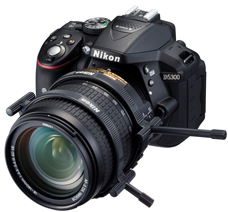
Teijin adds that this is the first time Sereebo has been adopted for a commercial product.
According to Teijin, Sereebo carbon fibre reinforced thermoplastics offer good strength and high conductivity. This allows the camera’s structural parts to achieve high strength and electromagnetic shielding. Also, the surface is particularly smooth and has no carbon fibre bosses due to Teijin’s resin-processing technologies.
Composites in cameras
Camera bodies and internal structural parts requiring strength commonly are made of metal. Plastics reinforced with chopped carbon fibres are used as a substitute to lower weight, but the short length of the chopped carbon fibres has made it difficult to take advantage of the strength and other unique features of carbon fibres.
Nikon has devised a solution in collaboration with Teijin by using its intermediate materials and processing technologies for the high-volume production of carbon fibre reinforced thermoplastic components.
Sereebo
Teijin adds that it is accelerating its development of applications for Sereebo-branded carbon fibre reinforced thermoplastic composites for mass-production products such as precision equipment, consumer electronics as well as automobiles requiring both strength and reduced weight.
Teijin says that it aims to become a global leader in the development of advanced solutions incorporating carbon fibres composites, targeting annual sales of JPY150-200 billion (US$1.5-2 billion) by around 2020.
See also: Teijin introduces Sereebo carbon fibre thermoplastics.




